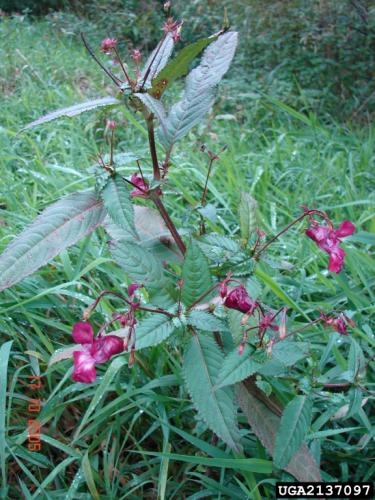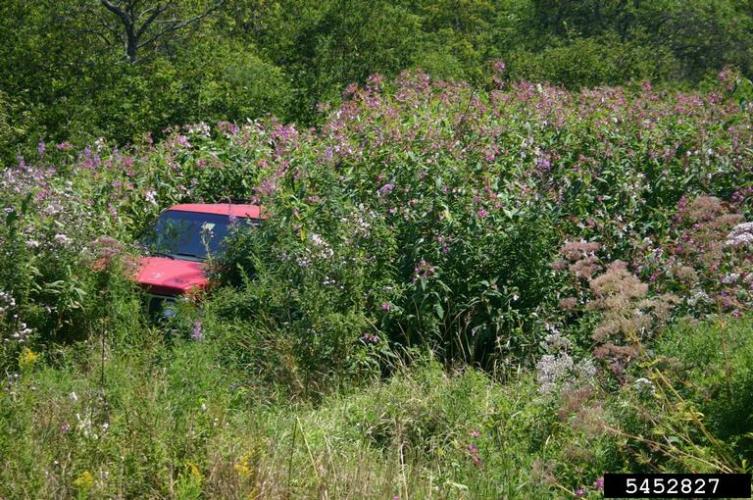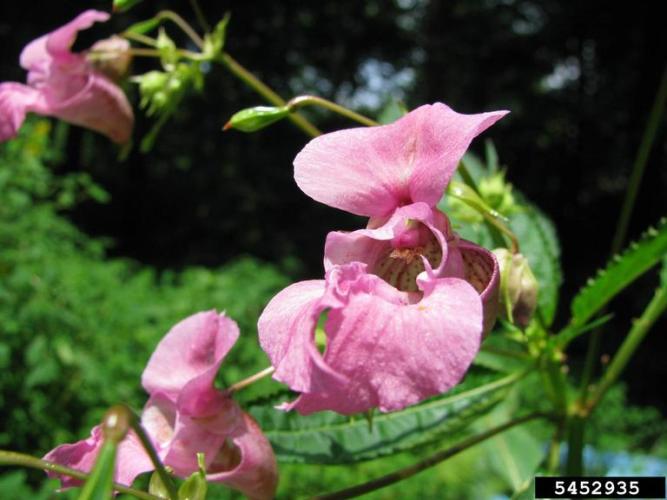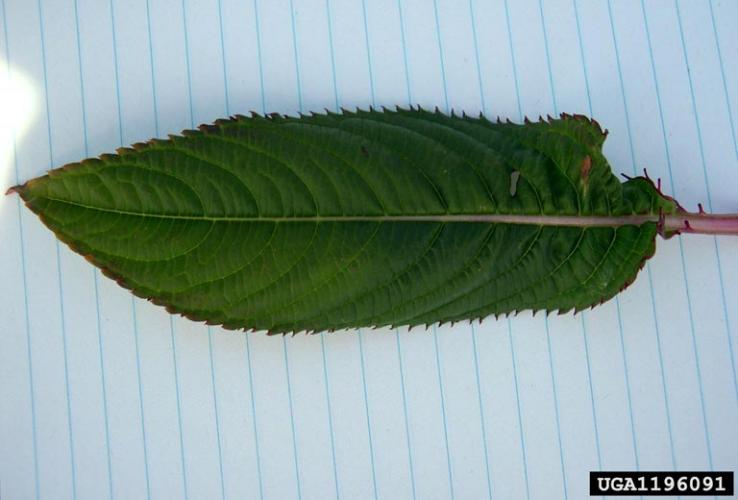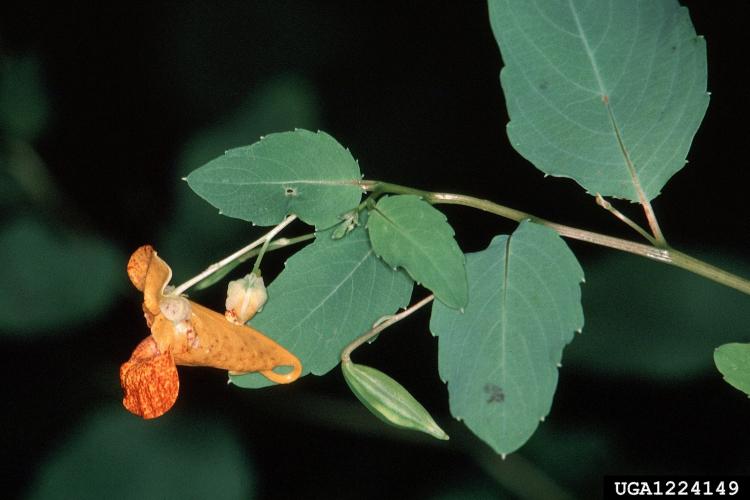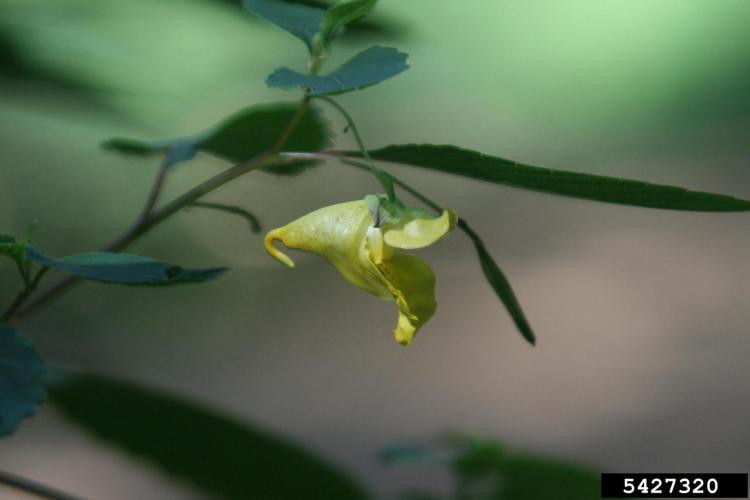Himalayan balsam
Identification
Appearance
Impatiens glandulifera is a succulent annual than can be 3-10 feet tall. The stems are purple tinged, hollow and hexagonally angled.
Foliage
The foliage is opposite or whorled. Leaves are lanceolate to lance-ovate with acuminate tips. Leaves are simple, serrate and 6 inches long.
Flowers
Flowering occurs from June to October. The pink, irregular, solitary flowers appear on axillary stalks.
Fruit
Fruits are five chambered capsules that, when mature, explode expelling seeds forcefully. Each plant produces about 800 seeds.
Biology
ECOLOGICAL THREAT
Impatiens glandulifera is a prolific seed producer. As is typical of the "touch-me-not" family, its seeds are locally dispersed by the ballistic action of its fruit capsules. The seeds can be dispersed further if they reach moving water, which is not uncommon given the plant's preference for moist areas.
ORIGIN
Impatiens glandulifera was brought to Europe from its native range in the Himalayas in 1835. It was first noted to have naturalized in Europe in 1855. It is presently found in many countries in continental Europe and throughout the UK. Robinson (1908) did not report the presence of Impatiens glandulifera in the 7th edition of Gray's Manual of Botany. In the eighth edition of Gray's Manual, Fernald (1950) reported that Impatiens glandulifera was "becoming occasionally escaped from cultivation" and was found in Nova Scotia, southern New Brunswick, Quebec, Ontario and northern New England.
HABITAT
Meadows, fields, forest, forest edge, disturbed areas
LIFE CYCLE
It is an annual herb which thrives in riparian zones and disturbed areas. Its high reproductive rate, early germintation, propensity for establishing thick stands, rich nectar production, hardiness, and habitat tolerance and plasticity have allowed it to spread rapidly, dominate landscapes, and compete with and displace native plant species. Impatiens glandulifera is a summer-annual, therophyte with no vegetative reproduction. Seed production varies with plant density. From germination flowering takes about 13 weeks and continues for another 12 weeks. Seed capsules mature producing up to 10 seeds and burst, expelling the seeds 3-5 m. Individual plants may produce more than 2,500 seeds in a vegetative period with taller plants producing more seeds and pods. I. glandulifera competes on river banks through synchronous germination of a large seed bank providing sufficient biomass to suppress neighboring species. This synchronous reproductive strategy is thought to rely on habitats with seasonally predictable disturbances such as flooding
Vermont Distribution
Citations
PHOTO CREDIT
Himalayan balsam, UGA2137097, Barbara Tokarska-Guzik, University of Silesia, CC 3.0
Himalayan balsam leaf, 1196091, Tom Heutte, USDA Forest Service, CC 3.0
Himalayan balsam infestation, 5452827, Leslie J. Mehrhoff, University of Connecticut, CC 3.0
Himalayan balsam flower, 5452935, Leslie J. Mehrhoff, University of Connecticut, CC 3.0
Jewelweed, 1224149, Jerry A. Payne, USDA Agricultural Research Service, Bugwood.org
Jewelweed, 5427320, Chris Evans, University of Illinois, Bugwood.org
INFORMATION CREDIT
Invasive Species Specialist group, Global invasive species database
